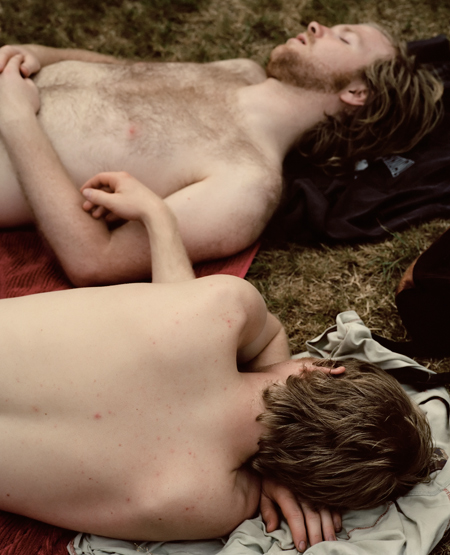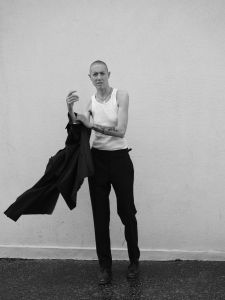Lionel Shriver on how Vermandel’s photography captures the exquisite
I’ve twice used Eva Vermandel’s portraits of me for author photos on my novels. Typically for her work, I appear profoundly present. A rare experience for the subject: in her pictures of me, I recognise myself.
In Vermandel’s spellbinding Splinter, portraiture interweaves with landscape and still life, but these distinctions seem artificial. Her landscapes are figurative, her figures have landscapes and the objects in still lifes pulse with the personality of flesh and blood. In one shot, the line between portrait and still life is wilfully obliterated, for the blurred human figure is seen through a vase of writhing flowers – as if the blooms are a metaphor for the inmost nature of the man behind them.
The photographer’s generosity of spirit is refreshing. Her lens is not stalking for an unguarded moment to grub up something ugly, bleak, or sad. The camera seeks only to reveal, to make a subject visible and preserve a moment. These images evoke silence, stillness and balance. People and objects alike are at rest. Their moods are serene. Figures are languorous. Undefended, subjects offer themselves up to her camera. There is nothing to hide.
Vermandel specialises in found beauty and some compositions draw on the spatial constructions of abstract impressionism: the seatback of a wooden chair before poorly repaired plasterboard. An old box set TV, tippling on a windowsill, wrapped in its cord. A clatter of busted beach chairs bound atop a blue plastic tarp. The ordinary and unsightly are transformed into visions with order and eloquence. Stray flotsam that amateurs would have tidied away, like a £20 note flattened into the right angle of a fireplace meeting a wall, becomes eerily riveting and makes the picture.
She is a master of natural light – employing chance popples or stripes from Venetian blinds in a painterly fashion. A shard of sunlight knifes down the middle of a wall calendar, as if the shaft has torn the photograph in half.
Vermandel still shoots film, which is warmer, kinder, more tender and more flattering than digital, but also more true. The clinical accuracy of the digital image dissects the body (worse – the face) into tiny, fractured, disassembled parts. It fails to duplicate the softer, more holistic manner in which people look at one another in real life.
When we look at our friends, we don’t see the pores, the moles, each blemish in high relief; we see our friends. The digital camera is cruel in a way that our gazes are not.
Vermandel salvages beauty from the ruins of everyday life and so gifts viewers with the same eye. Swivel from the page to discover the transporting visions, pulsating in a cluttered closet or dishevelled back garden. Snap a mental photo of that wistful companion draped over the sofa with a half-drunk beer. Check out the staircase with a broken toy fire engine on the third step as the early evening sun slants through the skylight.
The exquisite is all around us. We just have to see.
Lionel is an author and journalist




